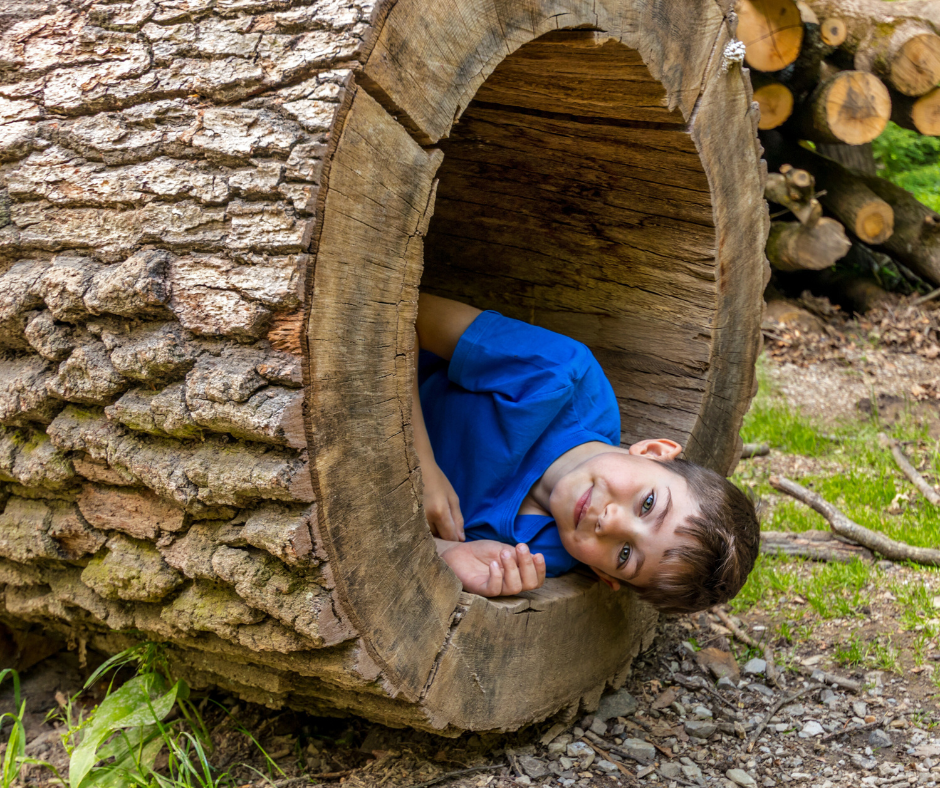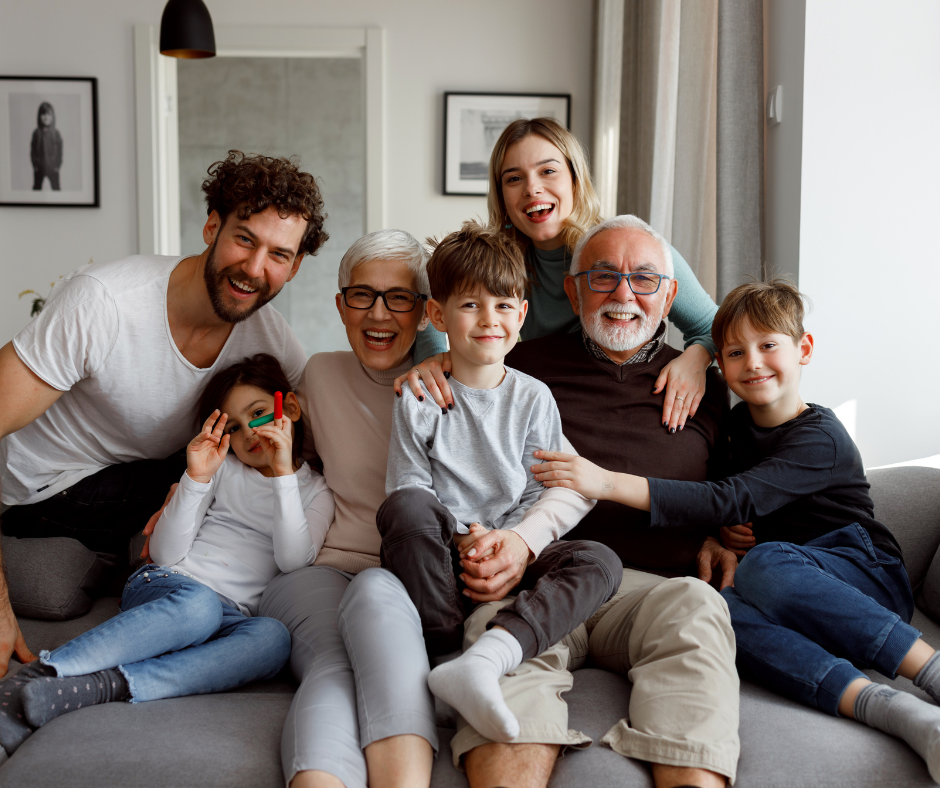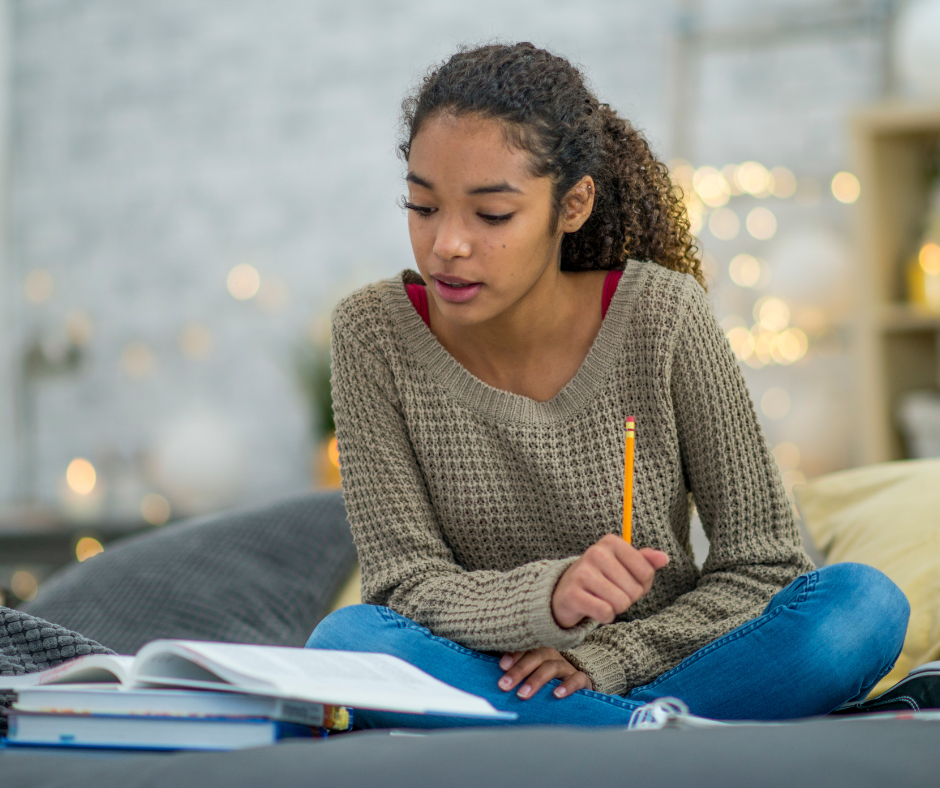

10 Alternative Schooling Options for Children of All Ages
Summary
This article explores various non-traditional educational paths for children, ranging from Montessori and Waldorf schools to homeschooling and unschooling. Each option is discussed in terms of its unique approach to learning, benefits, and suitability for different types of learners. The article aims to help parents make informed decisions about their child’s education by presenting a comprehensive overview of these alternative methods.
Reflection Questions
- How do your child’s learning style and interests align with the alternative schooling options presented in the article?
- What are your primary goals and values when it comes to your child’s education, and how do these align with the philosophies of the alternative schooling methods discussed?
- How can you involve your child in the decision-making process to choose an educational path that suits them best and fosters their love for learning?
Journal Prompt
Reflect on your experiences with traditional schooling, either your own or your child’s. Consider what aspects you found beneficial and which ones were lacking. How might alternative schooling options address these gaps? Write about how embracing a non-traditional educational path could positively impact your child’s growth, development, and overall well-being.
Many families are currently seeking alternatives to traditional public schools to better meet their children’s unique learning needs and preferences. From innovative pedagogies to flexible learning environments, these alternative schooling options offer diverse approaches that can enhance overall educational experiences. Here, we explore ten alternative schooling options that cater to children of all ages—providing insights into their philosophies, methods, and potential barriers for families.
10 Alternative Schooling Options for Children of All Ages
Montessori Schools


Montessori schools are rooted in the philosophy of child-centered learning, where the primary focus is on nurturing the individual development of each student. This approach emphasizes that children learn best when they are allowed to explore their interests at their own pace.
The Montessori philosophy believes in the inherent curiosity and potential of each child, encouraging self-discovery and fostering a lifelong love of learning. By creating an environment where students are free to choose their activities and direct their learning paths, Montessori education aims to cultivate independent, confident, and motivated learners.
Methods
The methods employed in Montessori schools are distinctive and tailored to support the philosophy of self-directed, child-centered learning. Classrooms are equipped with specially designed educational materials that are accessible to students and encourage hands-on learning and exploration. These materials are often self-correcting, allowing children to learn through trial and error and develop problem-solving skills.
Mixed-age classrooms are another hallmark of Montessori education, promoting peer learning, mentorship, and a sense of community. This structure enables younger children to learn from older peers while older students reinforce their knowledge by teaching concepts they have mastered.
Independence is a core value, and students are given the freedom to choose their activities and work at their own pace, fostering self-discipline and intrinsic motivation. Teachers in Montessori schools act as guides rather than traditional instructors, facilitating learning by providing resources and support while allowing students to take charge of their educational journey.
Potential Barriers for Families
Montessori schools face barriers such as high tuition costs due to specialized materials and trained teachers, making them less affordable for many families. Additionally, their limited availability, especially in rural or underserved areas, restricts access. The Montessori approach may also misalign with local education standards and standardized testing requirements, complicating transitions between Montessori and traditional public schools.
Waldorf Schools


Waldorf schools, inspired by the educational philosophy of Rudolf Steiner, place a strong emphasis on creativity, imagination, and holistic development. The core belief is that education should nurture the intellectual, artistic, and practical skills of students, recognizing the interconnectedness of these areas in fostering well-rounded individuals.
Waldorf education strives to develop not only the mind but also the heart and hands, aiming for a balanced growth that prepares students to be thoughtful, innovative, and capable members of society. This philosophy encourages the cultivation of imagination and creativity as essential components of learning, viewing education as an art form that should inspire and engage students on multiple levels.
Methods
The methods employed in Waldorf schools are distinctively designed to support the philosophy of holistic development. One of the primary approaches is the integration of arts and practical activities into the curriculum. Artistic expression through drawing, painting, music, and drama is interwoven with academic subjects to enhance creative thinking and emotional engagement.
Practical activities, such as crafting and gardening, help develop fine motor skills and a connection to the physical world. Storytelling plays a significant role, used not only to impart knowledge but also to stimulate imagination and moral development. Experiential learning is emphasized, with students actively participating in hands-on projects and real-world experiences.
Formal academics are deliberately introduced at a later stage, typically around age seven, allowing younger children to focus on play-based learning and the development of social and emotional skills. This approach fosters a deep and meaningful engagement with learning, promoting a love for knowledge and a well-rounded educational experience.
Potential Barriers for Families
Waldorf schools can be prohibitively expensive, with high tuition fees driven by specialized curricula and trained staff. Limited availability in less populated areas further restricts access. Philosophically, Waldorf education’s emphasis on delayed academics and holistic development may not align with families prioritizing early academic achievement and standardized testing.
Reggio Emilia Approach


The Reggio Emilia approach centers on child-led project-based learning, emphasizing the importance of community and collaboration in the educational process. Originating in the Italian town of Reggio Emilia, this philosophy views children as competent, capable, and active participants in their own learning.
It prioritizes the exploration of children’s interests and encourages inquiry, critical thinking, and creativity through collaborative projects. The approach believes that learning is a social and communal activity, involving not just the children but also parents, teachers, and the wider community in the educational journey.
Methods
In Reggio Emilia schools, the methods used are designed to support and enhance the philosophy of child-led and collaborative learning. There is a strong emphasis on expressive arts, which are integrated into daily activities to help children express their ideas and understanding through various mediums such as drawing, painting, sculpture, and drama.
The environment is considered the “third teacher” and is thoughtfully arranged to provoke curiosity, exploration, and discovery. Spaces are designed to be aesthetically pleasing and functional, with materials and resources readily available to inspire and support children’s projects.
Parent and community involvement is another cornerstone, with schools actively seeking to build strong connections with families and the local community, encouraging their participation in the educational process and creating a supportive and enriching learning environment.
Potential Barriers for Families
The Reggio Emilia approach can be costly due to the need for specialized materials and training, with a limited number of educators trained in this methodology. Schools fully implementing this approach are rare, especially outside urban areas, limiting access. Additionally, the high level of parental and community involvement required may not be feasible for all families.
Homeschooling


Homeschooling is based on the principle that education led by parents or tutors at home can be more effectively tailored to meet the specific needs and interests of the child. This approach allows for a highly individualized education, free from the constraints of traditional school settings.
Parents who choose homeschooling often believe that they can provide a richer, more flexible, and responsive educational experience than that offered by public or private schools. The philosophy supports a more personalized and nurturing learning environment, where the pace and content of education can be adapted to suit the child’s unique strengths and challenges.
Methods
Homeschooling methods are diverse and can vary widely depending on the family’s educational philosophy and goals. A flexible curriculum is a hallmark of homeschooling, allowing for adjustments based on the child’s interests, learning style, and pace of progress.
Individualized learning plans are crafted to focus on the child’s specific needs and areas of interest, which can include a range of subjects and activities. Families may incorporate various educational philosophies, such as classical education, which emphasizes a rigorous, structured approach; unschooling, which prioritizes self-directed, experiential learning; or a blend of different methods.
This flexibility allows homeschooling families to create a customized education that fosters a love of learning and accommodates the unique needs of each child.
Potential Barriers for Families
Homeschooling requires a significant time commitment from parents, which can be challenging for dual-income or single-parent households. Financial constraints arise as one parent often needs to reduce work hours or stay home. Socialization concerns also pose a barrier, as parents must find ways to provide adequate peer interaction for their children.
Unschooling


Unschooling is a learner-driven approach to education where the child’s interests and natural curiosity guide their learning journey. This philosophy rejects traditional schooling structures and formal curricula, advocating instead for an organic, life-based learning process.
Unschooling posits that children learn best when they are free to explore their passions and interests in their own way and time. The emphasis is on trust, respect, and the belief that meaningful learning happens naturally when children are engaged in activities that interest them.
Methods
In unschooling, there is no formal curriculum or structured lesson plans. Learning occurs through life experiences, play, household responsibilities, and community involvement. Parents and caregivers facilitate learning by providing resources, opportunities, and support based on the child’s interests.
This could include books, educational games, field trips, internships, and social interactions. The focus is on experiential learning, where children acquire knowledge and skills through practical engagement and real-world experiences. By allowing children the freedom to explore and learn at their own pace, unschooling aims to foster a deep, intrinsic motivation for lifelong learning.
Potential Barriers for Families
Unschooling’s lack of formal structure can be daunting for parents who may feel unprepared to guide their child’s education. Legal and regulatory issues may arise as unschooling is not recognized in all regions. Ensuring adequate socialization and access to extracurricular activities can also be more challenging compared to traditional schooling.
Charter Schools


Charter schools are publicly funded but operate independently of the traditional public school system. They are often established to provide innovative educational opportunities and to address specific educational goals or themes that may not be adequately covered in traditional public schools.
Charter schools aim to offer more flexibility in terms of curriculum design, teaching methods, and educational practices, allowing for a more customized and innovative approach to education. They are typically held accountable for achieving specific performance goals outlined in their charter.
Methods
The methods used in charter schools can vary widely depending on the school’s specific focus and mission. Some charter schools may adopt innovative teaching methods, such as project-based learning, technology integration, or personalized learning plans.
Others may offer specialized curricula that focus on areas such as STEM (science, technology, engineering, and mathematics), arts, or language immersion. The flexibility in educational approaches allows charter schools to experiment with different models and tailor their programs to better meet the needs of their student populations. This adaptability and focus on innovation are key components of the charter school model, providing diverse educational options within the public school framework.
Potential Barriers for Families
Charter schools often have limited enrollment capacities, requiring lotteries for admission, making access competitive. They may also face funding and resource constraints, potentially impacting the quality of education and support services. Furthermore, charter schools are not available in all regions, particularly rural areas, limiting their reach.
Forest Schools


Forest schools emphasize outdoor education and experiential learning through nature. This philosophy is based on the belief that regular interaction with the natural environment significantly enhances children’s physical, emotional, and intellectual development.
Forest schools aim to foster a deep connection with nature, promoting environmental stewardship, resilience, and self-confidence. The outdoor setting provides a dynamic and stimulating learning environment where children can explore, take risks, and engage in hands-on activities that support holistic development.
Methods
The methods employed in forest schools involve regular sessions held in woodland or other natural environments. These sessions focus on play, exploration, and hands-on learning activities that are child-led and driven by curiosity and discovery. Activities might include building shelters, nature crafts, wildlife observation, and environmental conservation projects.
The emphasis is on experiential learning, where children learn through direct interaction with their surroundings, developing practical skills, problem-solving abilities, and a sense of independence. The natural setting also encourages physical activity, creativity, and social interaction, contributing to overall well-being and a deeper appreciation for the environment.
Potential Barriers for Families
Forest schools require natural environments, which may not be accessible to urban families. Weather and safety concerns can deter some families from outdoor education. Additionally, forest schools can be expensive due to specialized equipment and trained staff, making them less affordable for many.
International Baccalaureate (IB) Schools


The International Baccalaureate (IB) program provides a rigorous, internationally recognized education that emphasizes critical thinking, cultural understanding, and global engagement. The philosophy behind the IB program is to develop inquiring, knowledgeable, and caring young people who are motivated to succeed.
IB schools aim to foster a global perspective, encouraging students to think critically and independently, and to understand and respect other cultures and viewpoints. The goal is to prepare students for success in a globalized world, promoting personal and academic excellence.
Methods
IB schools use a challenging academic curriculum that is designed to develop intellectual, personal, emotional, and social skills needed for a rapidly globalizing world. The curriculum emphasizes inquiry-based learning, where students actively engage in their own learning process through questioning, research, and exploration.
The IB program includes a strong emphasis on the development of critical thinking skills, interdisciplinary learning, and the application of knowledge to real-world situations. Personal and social skills are also a focus, with programs encouraging community service, intercultural understanding, and ethical responsibility.
The IB diploma program, in particular, is known for its rigorous assessment standards and comprehensive approach to education, which includes core components such as the Extended Essay, Theory of Knowledge course, and Creativity, Activity, Service (CAS) requirements.
Potential Barriers for Families
IB programs are costly due to their rigorous curriculum and the need for specially trained teachers, resulting in high tuition fees. Accessibility is another issue, as IB schools are not available in all areas, particularly rural regions. The rigorous academic demands of the IB program may also not suit all students, leading some families to seek alternatives.
Sudbury Schools


Sudbury schools are founded on the philosophy of democratic education, where students have complete responsibility for their own education. This approach is based on the belief that children are naturally curious and capable of directing their own learning when given the freedom and respect to do so.
Sudbury schools emphasize self-governance, with students participating in the decision-making processes that affect their education and school community. This democratic approach aims to develop independent, self-motivated learners who are equipped to make informed decisions and take responsibility for their actions.
Methods
In Sudbury schools, students have the autonomy to decide what, when, and how they learn, with no formal curriculum or mandatory classes. The learning environment is designed to be a supportive community where students can pursue their interests and passions at their own pace.
Education is self-directed, with students engaging in activities that they find meaningful and engaging, whether it be academic study, creative pursuits, or practical skills. The school operates as a democratic community, with students and staff having equal votes in decisions about school rules, policies, and the use of resources.
This model fosters a strong sense of ownership, responsibility, and community involvement, preparing students for active participation in democratic society.
Potential Barriers for Families
Sudbury schools are expensive due to their unique educational model and small student-to-teacher ratios. Their rarity and limited availability in many areas restrict access for interested families. Philosophically, the democratic and self-directed nature of Sudbury education may not align with all families’ expectations for structure and guidance.
Online Schools


Online schools provide an educational option that emphasizes flexibility in terms of time and location, catering to diverse learning needs. This philosophy is based on the idea that learning can happen effectively outside the traditional classroom setting, utilizing digital technologies to deliver curriculum and instruction. Online education aims to offer accessible, personalized, and self-paced learning opportunities that can accommodate different lifestyles, schedules, and educational goals.
Methods
The methods used in online schools involve the use of digital platforms to deliver curriculum and instruction. Virtual classrooms, online resources, and interactive learning tools are commonly employed to facilitate education.
Students can access lessons, assignments, and assessments through online portals, allowing them to learn at their own pace and according to their individual schedules. Blended learning models, which combine online education with in-person instruction, may also be used to provide a more comprehensive learning experience.
Fuel your creative fire & be a part of a supportive community that values how you love to live.
subscribe to our newsletter
Online schools often offer a wide range of courses and programs, enabling students to tailor their education to their interests and needs while benefiting from the flexibility and accessibility of digital learning.
Potential Barriers for Families
Online schools require reliable internet access and appropriate technology, which can be a barrier for families with limited resources. They also need a high level of parental involvement and support, challenging for working parents. Additionally, ensuring adequate social interaction and extracurricular opportunities can be more difficult in an online school environment.
Final Thoughts: Advocating for Access to Alternative Schooling Opportunities


Access to alternative schooling is crucial because it caters to the unique learning needs of every child. Traditional public schooling often follows a one-size-fits-all approach, which may not effectively serve all students. Alternative schooling options, such as Montessori, Waldorf, and Reggio Emilia, offer tailored educational philosophies that align more closely with individual learning styles, strengths, and challenges. This personalized approach enhances overall learning and development, fostering a more inclusive and effective educational experience.
Moreover, alternative schooling provides flexibility and personalization that can accommodate different paces of learning and allow students to explore subjects of interest more deeply. This flexibility is particularly beneficial for students with special educational needs, who might require specialized programs and environments not typically available in traditional schools. By offering culturally relevant education, alternative schools respect and incorporate diverse backgrounds, enhancing engagement and promoting respect for different perspectives.
Many alternative schooling methods emphasize holistic development, focusing on emotional, social, and practical skills alongside academic achievement. Innovative teaching methods in these schools encourage critical thinking, creativity, and problem-solving, better preparing students for the complexities of the modern world. Smaller class sizes and increased parental involvement also contribute to a more supportive and effective educational environment. Overall, access to alternative schooling ensures a dynamic, inclusive, and adaptable education system that better serves the diverse needs and potentials of all students.
Expanding Access to All Demographics


Making the type of schooling each family desires more accessible requires a multifaceted approach that addresses cost, availability, and alignment with family needs. Firstly, increasing funding and financial support for alternative schooling options can significantly reduce barriers. Governments and private organizations could offer scholarships, grants, and vouchers to make Montessori, Waldorf, Reggio Emilia, and other alternative schools more affordable.
Additionally, tax incentives for families who choose to homeschool or unschool could help alleviate financial burdens. Establishing publicly funded charter schools with diverse educational focuses can provide more options within the public school framework, making specialized education accessible without prohibitive costs.
Addressing Limited Geographic Availability


Expanding the geographic availability of alternative schooling options is crucial. This can be achieved by encouraging the development of alternative schools in underserved areas through incentives and support for school founders.
Integrating Blended Learning Models


Online platforms can also play an important role in reaching families in remote locations. By enhancing online school offerings and integrating blended learning models that combine online education with periodic in-person sessions, families can access high-quality education regardless of their geographic location. Additionally, mobile and pop-up schools that bring educational opportunities to rural and underserved areas can provide flexible and accessible learning environments.
Promoting Flexibility Within Our Existing Education System


To align alternative schooling options with family needs, it is essential to promote flexibility and adaptability within the education system. Policies should support a range of educational approaches and allow for smooth transitions between different types of schooling. Providing professional development and resources for educators in alternative schools can ensure high-quality instruction and adherence to best practices.
Building Community Resource Networks


Fostering community partnerships and parental involvement in educational decision-making can create a more supportive and responsive education system. By building a network of resources, such as community learning centers and co-ops, families can access supplemental educational activities, socialization opportunities, and extracurricular programs that enrich the alternative schooling experience.








